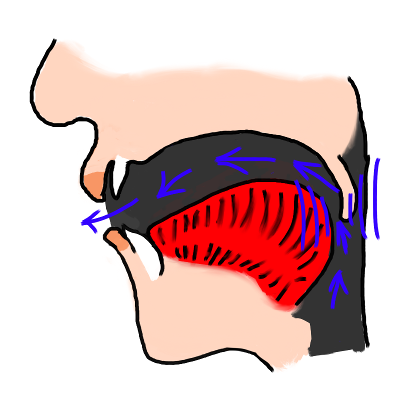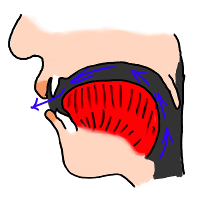How to pronounce sur
Do you find the information below useful? If you do, you can get guides like it for 1,000+ French words by downloading this app for your iPhone or iPad.
| s |  | A French 's' sound is made in a very similar way to an English 's' sound, by bringing the front part of the tongue very close to the ridge behind the teeth, causing friction as the air escapes. However, many English speakers use the very tip of the tongue, whereas in French it is common to use the part of the tongue just behind the tip (called the "blade" of the tongue). | |
| y |  | The French 'u' vowel is pronounced with the tongue almost as far forward and close to the roof of the mouth as it will go (as for an 'i' vowel), but with the lips rounded. Aim to 'hold' your lips in position to avoid pronounce the vowel is a 'glide' or diphthong. The phonetic symbol [y] can be slightly confusing: it represents the 'u' vowel, and not the sound at the beginning of the English word "yes". | Notice how this vowel is lengthened here before the r sound at the end of the word. |
| ʁ |  | The French 'r' is generally what is technically called a "uvular fricative". In simple language, that means you bring the back of your tongue close enough to the back of the mouth that it causes friction (the "raspy" sound that you hear) with the escaping air. | |
| ə |  | The 'schwa' or 'neutral e' is pronounced with the tongue in a "central, relaxed" position and the mouth also in a 'half open, relaxed' position. Note that many French speakers actually tend to pronounce this vowel as a 'close eu' vowel (as occurs at the end of words ending in -euse), or at least with some rounding of the lips. | Notice how this sound is pronounced as a little "off-glide" at the end of the word even though there isn't an -e in the spelling. It doesn't receive stress, and would typically disappear when followed by another word. |